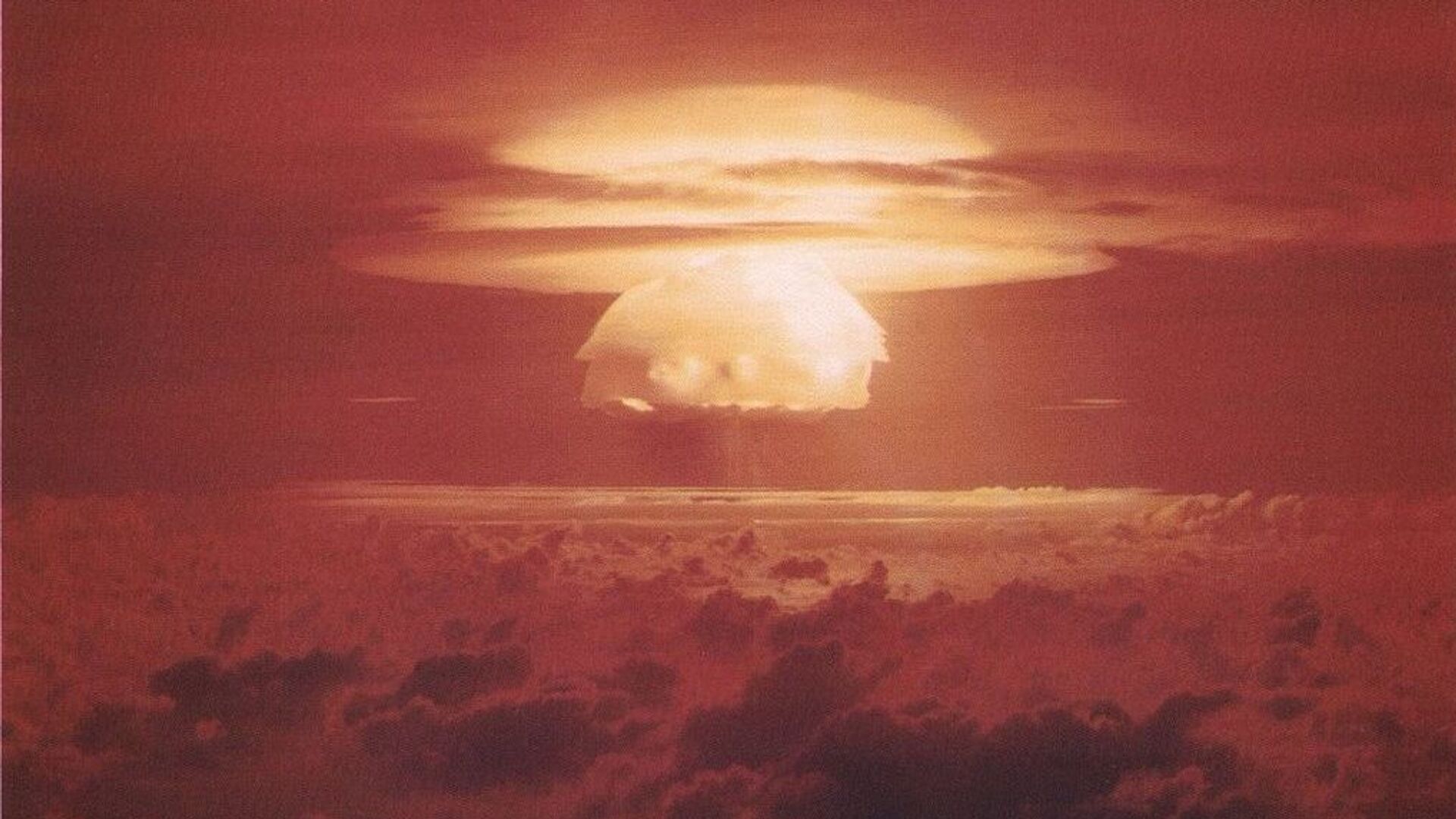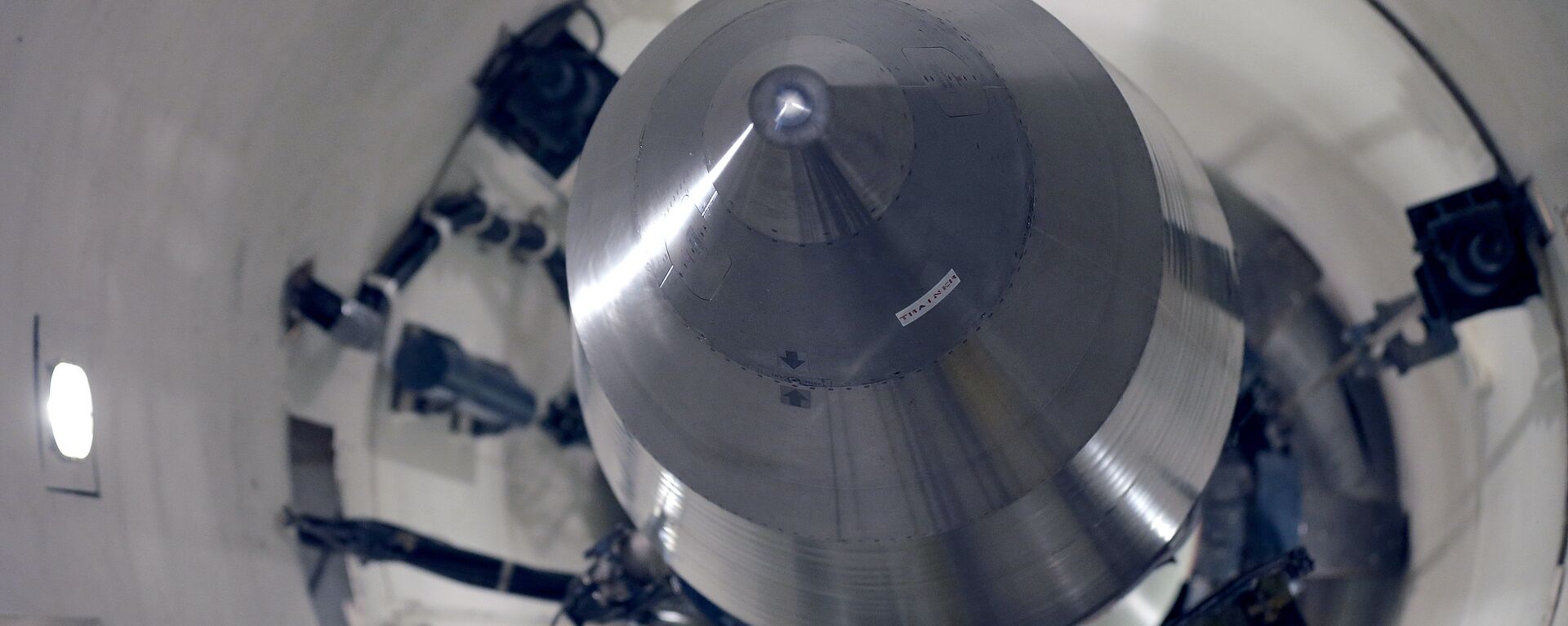https://sputnikglobe.com/20230613/plutonium-from-us-nuclear-weapons-tests-polluting-south-china-sea-study-finds-1111126463.html
Plutonium From US Nuclear Weapons Tests Polluting South China Sea, Study Finds
Plutonium From US Nuclear Weapons Tests Polluting South China Sea, Study Finds
Sputnik International
A new study has found that plutonium sediments in the South China Sea have their origins in fallout from US nuclear tests conducted in the South Pacific in the mid-20th century.
2023-06-13T20:23+0000
2023-06-13T20:23+0000
2023-06-13T20:23+0000
world
south china sea
us nuclear weapons
marshall islands
plutonium
radioactive material
https://cdn1.img.sputnikglobe.com/img/107759/02/1077590263_0:95:1018:668_1920x0_80_0_0_e5989b92030957a0cb0b7f9e8620eb84.jpg
The study, published in the peer-reviewed Chinese language journal Environmental Chemistry, traced plutonium particles found in sediments on the seabed of the South China Sea to nuclear weapons tests in the US Pacific Proving Ground, a series of atolls and islands in the South Pacific nearly 3,000 miles to the east, where the US detonated dozens of nuclear weapons between 1946 and 1962.Their conclusion was based on a precise identification of the ratio of two plutonium isotopes, 240Pu and 239Pu, which is a unique part of the process of manufacturing plutonium. The ratio in the South China Sea sediments is identical to that left by US nuclear weapons tests at the PPG, with a range of 0.306-0.36.According to the scientists, the radioactive sediment was carried westward by the North Pacific Gyre, an ovular ocean current that rotates clockwise. The current comes west through the Marshall Islands, Micronesia, and Caroline Islands before hitting the Philippines and Taiwan, swinging north, and then turning east along the southern coast of Japan. On the California coast, it turns south until it is forced westward again by other currents along the Mexican coast.The sediments would have passed along this current, entering the South China Sea via the Luzon Strait that separates Luzon from Taiwan.The research team in particular used sediments collected from Nansha, or the Spratly Islands, but also looked at prior research from other parts of the South China Sea, and found that US nuclear weapons created 7.15% and 15.89% of the plutonium in Nansha and 87% of the overall plutonium pollution in the northern parts of the South China Sea that are close to the Luzon Strait. However, the amount of pollution across the sea varies widely.The US began using several remote Pacific islands to test nuclear weapons in the period immediately after World War II, which was forced to an end by Washington’s use of nuclear bombs to destroy the Japanese cities of Hiroshima and Nagasaki in August 1945. Between 1946 and 1958, the US detonated 67 nuclear devices in the Marshall Islands, amounting to a total explosive yield equal to roughly 210 megatons of TNT, or an average of two Hiroshima-sized bombs every two days. The tests included underwater, surface, and upper atmospheric detonations, testing the viability of the devices as anti-naval, anti-surface, and even anti-satellite weapons.Castle Bravo, the US’ first thermonuclear bomb, detonated in 1954 on Bikini Atoll, was much larger than scientists anticipated and threw up vast amounts of radioactive dust into the atmosphere, which fell across a wide region of sea that included several inhabited islands and a Japanese fishing boat, Daigo Fukuryū Maru, afflicting the crew of 23 with acute radiation poisoning and killing one of them.
https://sputnikglobe.com/20230612/global-nuclear-arsenals-growing-amid-increased-tensions---sipri-1111077234.html
south china sea
marshall islands
Sputnik International
feedback@sputniknews.com
+74956456601
MIA „Rossiya Segodnya“
2023
News
en_EN
Sputnik International
feedback@sputniknews.com
+74956456601
MIA „Rossiya Segodnya“
Sputnik International
feedback@sputniknews.com
+74956456601
MIA „Rossiya Segodnya“
plutonium; nuclear weapons; south china sea; marshall islands
plutonium; nuclear weapons; south china sea; marshall islands
Plutonium From US Nuclear Weapons Tests Polluting South China Sea, Study Finds
A new study has found that plutonium sediments in the South China Sea have their origins in fallout from US nuclear tests conducted in the South Pacific in the mid-20th century.
The study, published in the peer-reviewed Chinese language journal Environmental Chemistry, traced plutonium particles found in sediments on the seabed of the South China Sea to nuclear weapons tests in the US Pacific Proving Ground, a series of atolls and islands in the South Pacific nearly 3,000 miles to the east, where the US detonated dozens of nuclear weapons between 1946 and 1962.
Their conclusion was based on a precise identification of the ratio of two plutonium isotopes, 240Pu and 239Pu, which is a unique part of the process of manufacturing plutonium. The ratio in the South China Sea sediments is identical to that left by US nuclear weapons tests at the PPG, with a range of 0.306-0.36.
Plutonium from other sources, such as the worldwide radioactive fallout from atmospheric nuclear weapons tests, or the disaster at the Chernobyl Nuclear Power Plant in Soviet Ukraine in 1986, each bear their own unique ratios of 240Pu and 239Pu, enabling scientists to discern the origins of different types of plutonium.
According to the scientists, the radioactive sediment was carried westward by the North Pacific Gyre, an ovular ocean current that rotates clockwise. The current comes west through the Marshall Islands, Micronesia, and Caroline Islands before hitting the Philippines and Taiwan, swinging north, and then turning east along the southern coast of Japan. On the California coast, it turns south until it is forced westward again by other currents along the Mexican coast.
The sediments would have passed along this current, entering the South China Sea via the Luzon Strait that separates Luzon from Taiwan.
Despite the waterway’s proximity to another nuclear-armed superpower, China, the radioactive material could not have come from Chinese nuclear weapons.
Between 1964 and 1996, China conducted 47 nuclear tests of its own - all of them at Lop Nur, a facility in the vast salt beds of southeastern Xinjiang, nearly 1,500 miles inland.
The research team in particular used sediments collected from Nansha, or the Spratly Islands, but also looked at prior research from other parts of the South China Sea, and found that US nuclear weapons created 7.15% and 15.89% of the plutonium in Nansha and 87% of the overall plutonium pollution in the northern parts of the South China Sea that are close to the Luzon Strait. However, the amount of pollution across the sea varies widely.
The US began using several remote Pacific islands to test nuclear weapons in the period immediately after World War II, which was forced to an end by Washington’s use of nuclear bombs to destroy the Japanese cities of Hiroshima and Nagasaki in August 1945.
Between 1946 and 1958, the US detonated 67 nuclear devices in the Marshall Islands, amounting to a total explosive yield equal to roughly 210 megatons of TNT, or an average of two Hiroshima-sized bombs every two days. The tests included underwater, surface, and upper atmospheric detonations, testing the viability of the devices as anti-naval, anti-surface, and
even anti-satellite weapons.
The tests blanketed the area with huge amounts of radioactive material, rendering many of the islands uninhabitable and bringing cancer-causing particles down on many of the island residents who were not removed prior to the testing. In addition to plutonium, they also polluted the area with cesium, strontium and other radioactive materials.
Castle Bravo, the US’ first thermonuclear bomb, detonated in 1954 on Bikini Atoll, was much larger than scientists anticipated and threw up vast amounts of radioactive dust into the atmosphere, which fell across a wide region of sea that included several inhabited islands and a Japanese fishing boat, Daigo Fukuryū Maru, afflicting the crew of 23 with acute radiation poisoning and killing one of them.



